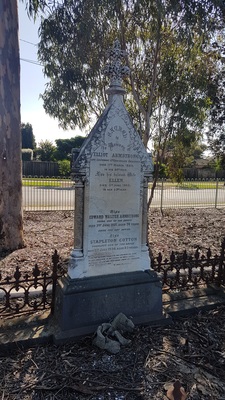Esther Lauaki
Visitors to Werribee Cemetery might have passed Elliot Armstong’s gravestone time and again never knowing who he was or what he meant to Wyhdham.
Mr Armstrong was one of the area’s most prominent early settlers and gave Wyndham its name.
Last month marked the 140th anniversary of his death.
Local historian Jan Penney, of The Greater Metropolitan Cemeteries Trust, said Mr Armstrong led an “interesting and diverse” life.
“It was Elliot who suggested the name Wyndham be adopted for the local district because of his relationship with Sir Henry Wyndham, a famous Waterloo soldier,” Ms Penney told Star Weekly.
A lieutenant in the 6th Inniskilling Dragoons, a cavalry regiment in the British Army, he and his wife Ellen migrated to Australia in the late 1840s and went on to have 12 children.
“By 1850 Elliot was running a punt across the Werribee River between Melbourne and Geelong and when the land around Wyndham was offered for sale in the 1850s, Elliot began buying up several allotments,” Ms Penney said.
Mr Armstrong became a publican in 1851 when he was granted the licence for the Bridge Inn at Werribee.
“The hotel had been built around 1850 on the banks of the river close to his punt. At the time, the Bridge Inn was the only accommodation for those travelling along the Melbourne-Geelong Road and was used just for that purpose until the liquor licence was granted,” Ms Penney said.
“As the only substantial building in the district, the hotel was used for local meetings including the Roads Board and later the shire meetings. Elliot became a councillor in 1866.”
He retained the licence until 1879 and the site is now home to the Racecourse Hotel.
Mr Armstrong also allowed a school to be established in the hotel grounds known as “Miss Armstrong’s School” where one of his daughters taught 19 pupils.







